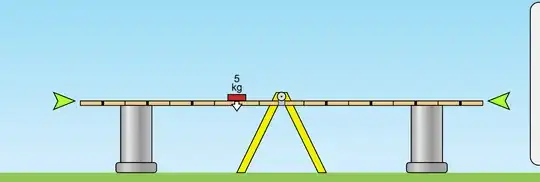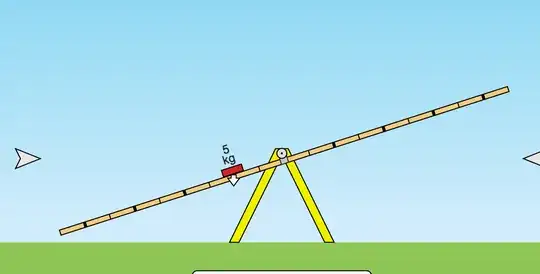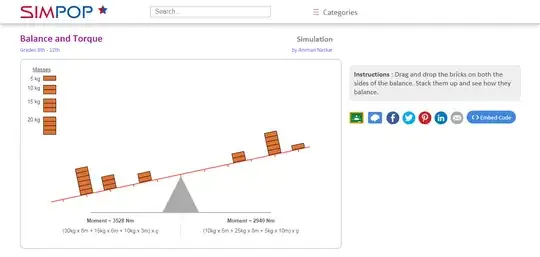I have a tonne of questions related to see-saw equilibrium because most places I've been to online only deal with horizontal equilibrium - but static equilibrium can occur on an angle too. My questions stem from some torque/force concepts established in a previous question:
Why does the weighing balance restore when tilted and released
In the above link, it was established that by applying an unbalanced force to one side of the scales, they will begin to sink towards the side of the applied force. However, by doing so, the torque from the force is decreased (since only the component of the force perpendicular to the beam contributes to torque) - and apparently torque on the opposite side increases. Eventually a point will be reached where the two opposing torques are in equilibrium.
- How can I calculate the angle of the 'beam' when equilibrium is reached?
- How can I calculate the individual torque of both sides when the scales are in equilibrium. (I know they will be both equal, but how can I find them?)
Also, could you help me see if the following way of conceptualising the situation is accurate: When a force is applied to only one side of some scales (or a see-saw, like in the image below), the centre of gravity is not initially at the pivot point....
So the see-saw will rotate about the pivot point until the centre of gravity occurs in the same location as the pivot point, where equilibrium is achieved (Is this true? I just assumed it).
p.s. images from a PhET simulation (:



